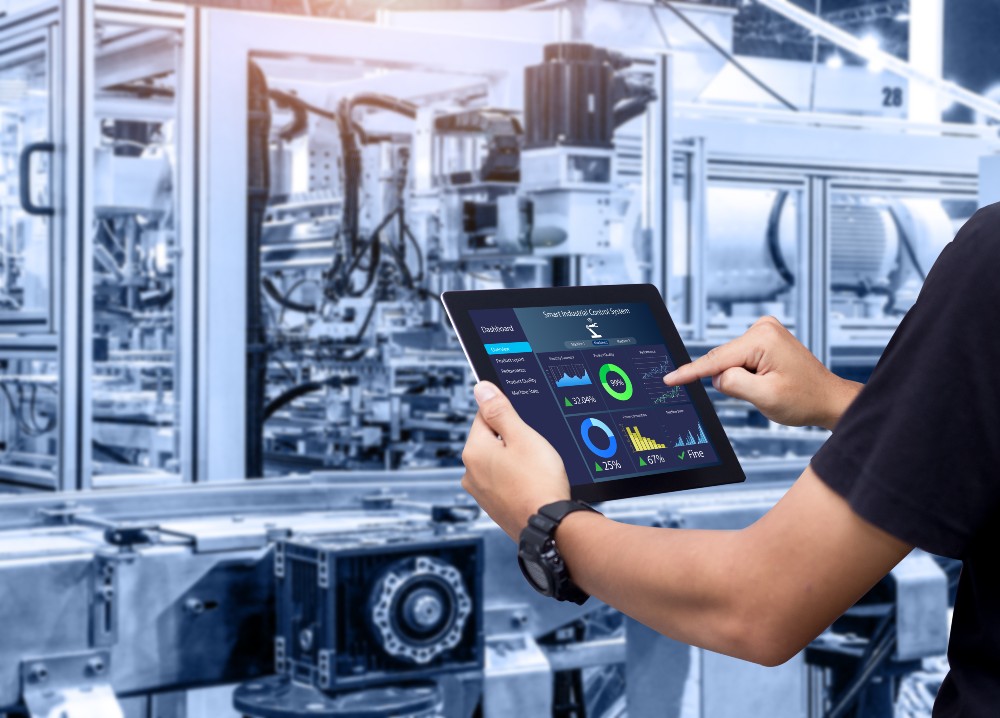We already welcomed artificial intelligence (AI) in our smartphones and fitness monitors, so it’s not surprising that we can see more and more devices being introduced to the electronics manufacturing world.
The current fourth industrial revolution has turned the engineering manufacturing sector — and how it used to operate — upside down. Almost every department and operation is linked, well-documented, and automated.
While the notion of this digital transformation is not new to the business, it can be tricky to integrate new devices and ideas into any manufacturing process.
Many manufacturers have had to rethink how they uphold their supply chains due to the COVID-19 pandemic over the last two years. In this time of unprecedented upheaval, organizations have to make smarter real-time choices and provide a better customer experience.
With a lot going on in the world of manufacturing, some digital innovation trends seem to be here to stay.
Internet of Things (IoT) and Artificial Intelligence (AI)
The Internet of Things (IoT) is becoming more critical to the electronics sector as a whole. While the name sounds a bit confusing, IoT is nothing more than linking several internet-connected gadgets and devices together to form a single system.
Electronics manufacturers have used this technology in various ways, each with its own set of advantages. Utilizing IoT has led to cost reductions, product innovation, greater efficiency, and improved safety.
The internet has been the main driver fueling this growth. Smaller sensors and cloud computing have made it possible to link a more significant number of devices more efficiently.
Combining this technology with other breakthroughs in science and engineering may enable better short- and long-term decision-making.
Utilization of 3D Printing
Reduced manufacturing cost is only one of the many advantages that 3D printing has brought to manufacturers. Because of this, designers can debug and test their designs faster when prototyping.
Printed circuit board (PCB) and integrated circuit manufacturers have been using 3D printers to produce “smart components” with embedded electronics for almost four decades.
It was only a matter of time before they started using 3D printers in additive manufacturing.
The capacity to manufacture a wide range of high-end electronics in a single, seamless process is made possible by integrating additive manufacturing machines into the electronics manufacturing environment.
PCBs that are traditionally manufactured utilize a pick-and-place system to implant specific components. However, 3D printer technology allows up to fifty alternating layers to be printed on a single circuit.

Predictive Maintenance
A company’s production schedule may be thrown entirely off course if machinery malfunctions. Due to the time, it can take to complete repairs, this often results in substantial income loss. As a result, many companies will place an emphasis on prevention.
Looking out for issues before machinery breaks down can save millions of dollars and protect your reputation with more reliable delivery timelines.
Predictive maintenance is a condition-based maintenance technique that tracks the health of machinery using input devices. These devices, which process gathered information and generate an output, are also known as sensor devices.
Data gathering and predictive analytics help company owners prevent equipment failure by predicting when and how it will happen.
Reliable and well-maintained equipment will keep downtime expenses and repair costs to a minimum.
Implementation of Cobots
When you combine “collaboration,” and “robots” you get “cobots.”
They’re intended to work alongside humans in a safe environment and to allow for human-robot cooperation. Like conventional industrial robots, cobots have a mechanical arm that may be programmed to do a variety of jobs in the factory, including material handling, assembly, process duties, quality inspection, and packing.
This frees up the cobot’s human coworker to concentrate on activities that require more agility and cognitive skills than the cobot can handle.
They differ from conventional robots in that they operate near human employees, using sensors and unique software algorithms. Cobots autonomously avoid collisions with barriers (whether objects or people), and the forces produced during a collision are small enough to avoid injury — making them ideal for manufacturing operations.
While the power of digital technologies, big data, and the IoT continues to alter the electronics manufacturing environment, there is also rising interest in discovering methods for people and smart devices to collaborate.
With the arrival of Industry 5.0, we are already seeing the fusion of the finest qualities of people and robots — combining human insight with AI methods to enhance the production process.
Working With an Experienced EMS Provider
As our equipment gets more sophisticated, alongside the development and growth of our workers and goods, the electronic manufacturing services (EMS) industry can look forward to a bright future.
A smart manufacturing transformation can save your company money while increasing earnings, creating more employment opportunities, and strengthening the economy.
Now that you know some of the active trends in the manufacturing industry, you’ll have a better idea of what to look for in an EMS partner.
Do your research, and ensure that your partner is reliable and up to date with ongoing manufacturing trends. The more advanced they are, the more efficiently they’ll produce your final device.
For more tips on finding a professional, knowledgeable manufacturer to partner with, follow these tips.
